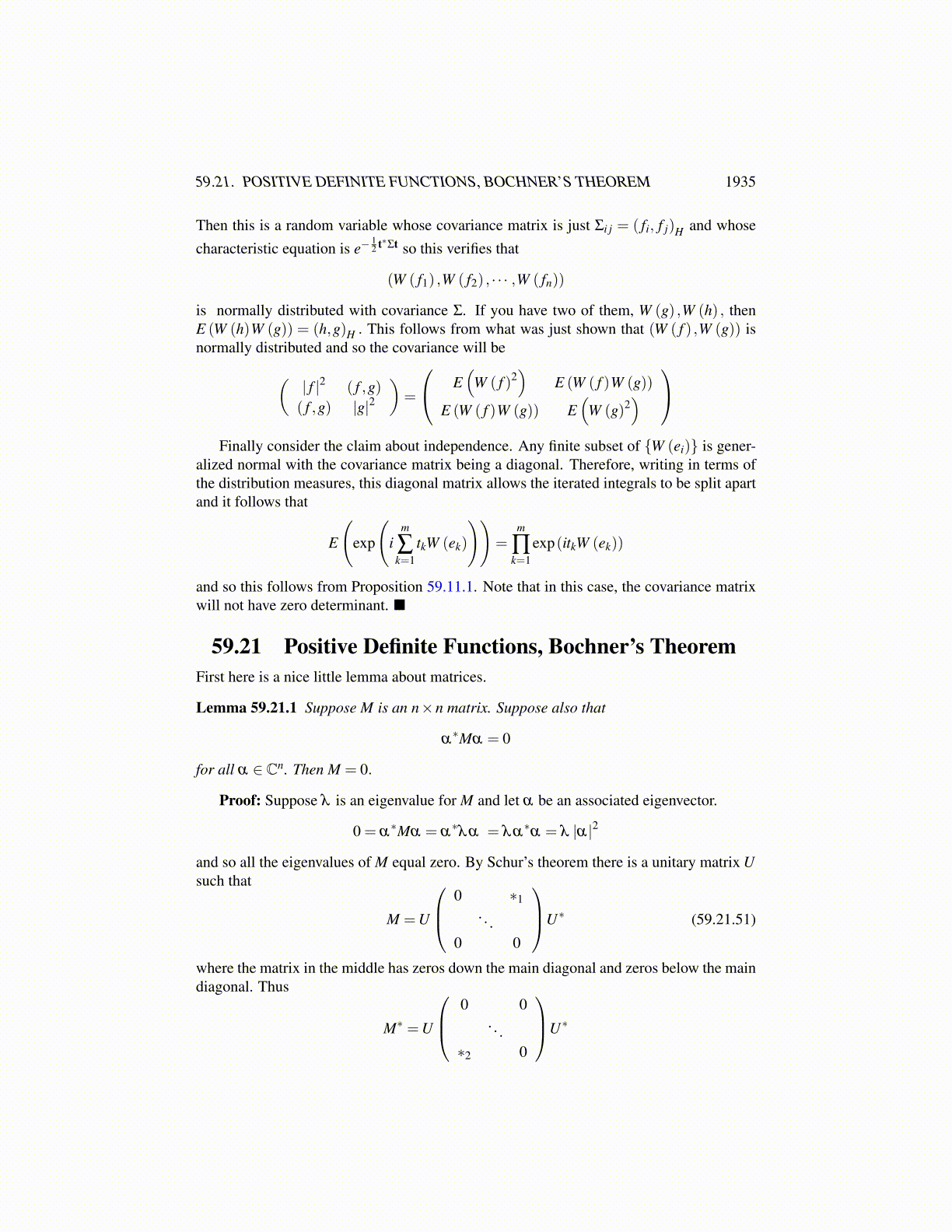
59.20. GENERALIZED MULTIVARIATE NORMAL 1935
Also, it suffices to consider E(Xq
k
). Differentiate both sides. Using the repeated index
summation convention,
e−12 t∗Σt (−Σnk jt j
)=∫Rp
ixkeit·xdµ
Now differentiate again.
e−12 t∗Σt (−Σnk jt j
)(−Σnk jt j
)+(−Σnkk) =−
∫Rp
x2keit·xdλ Xn
Next let t = 0 to conclude that E(X2
nk
)= Σnkk. Of course you can continue differentiating
as long as desired and obtain E(X2m
nk
)is equal to some polynomial formula involving Σnkk
and these are given to converge to Σkk. Therefore, for any q > 1,{E (|Xn|q)} is boundedand so from the above, ∫
Ω
|X|q dP≤ lim infn→∞
2qE (|Xn|q)< ∞
So yes, X is indeed in Lq (Ω,Rp) for every q. What about the covariance?From the definition of the characteristic function,
e−12 t∗Σt =
∫Rp
eit·xdµ
and so taking the derivative with respect to tk of both sides,
e−12 t∗Σt (−Σk jt j
)=∫Rp
ixkeit·xdµ
Now differentiate with respect to tl on both sides.
e−12 t∗Σt (−Σliti)
(−Σk jt j
)+ e−
12 t∗Σt (−Σkl)
=∫Rp
ixk (ixl)eit·xdµ =−∫Rp
xkxleit·xdµ
Now let t = 0 to obtainΣkl =
∫Rp
xkxleit·xdµ = E (XkXl)
If m ̸= 0, the same kind of argument holds with a little more details. This proves thefollowing theorem.
Theorem 59.20.2 Let Σ be nonnegative and self adjoint p× p matrix. Then there exists arandom variable X whose distribution measure λ X has characteristic function
eit·me−12 t∗Σt
AlsoE((X−m)(X−m)∗
)= Σ
that isE((X−m)i (X−m) j
)= Σi j
This is generalized normally distributed random variable.